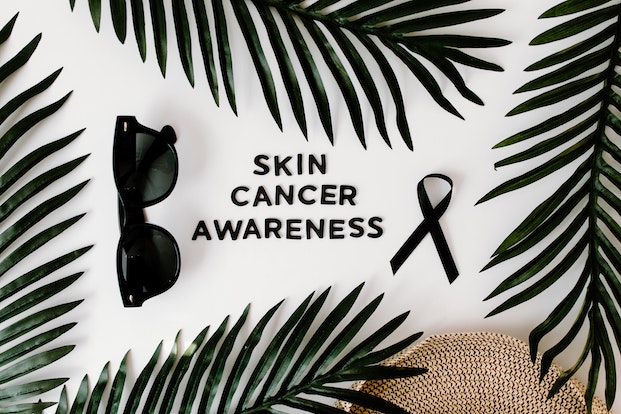4 Ways to Lower Your Skin Cancer Risk
May 9, 2022
May is Skin Cancer Awareness Month. Here are 4 ways you can help to lower your risk of skin cancer while enjoying the sun safely.
 Warm spring weather is the perfect antidote to the cabin fever that winter often inspires, especially the idea of getting some sun on your face. Though getting some fresh air is a good idea, too much of a good thing can be bad as well, which is why skin cancer risk awareness is so important.
Warm spring weather is the perfect antidote to the cabin fever that winter often inspires, especially the idea of getting some sun on your face. Though getting some fresh air is a good idea, too much of a good thing can be bad as well, which is why skin cancer risk awareness is so important.
May is Skin Cancer Awareness Month. When you’re smart about sun protection and know common skin cancer “red flags,” you’ll be able to enjoy the great outdoors worry-free this season.
Here are four ways to lower your risk of skin cancer:
Start with Sunblock
Sunblock isn’t only for beach outings – it’s an excellent first line of defense for your skin when it comes to ultraviolet light exposure.
Find a lightweight, everyday lotion with an SPF, or sun protection factor, of at least 30 to keep yourself safe, even on cloudy or overcast days. Of course, if you’re planning on more prolonged or intense sun exposure, bump up the SPF number to a product that offers more protection. Whichever sunblock or cream you select, make sure the bottle notes that it shields against both UVA and UVB rays for the most comprehensive results.
An important note: if you’re planning on going in the ocean, a lake, or in an outdoor pool, be sure to reapply sunscreen every 20 minutes to keep consistent coverage on your skin.
Layer Up
No one likes to feel warm when the weather’s already oppressive, but be selective with how much skin you bare to the sun, whenever possible. Long sleeves, clothing with opaque fabric (or, better yet, SPF-rated fabric), cover-ups, and UV-blocking sunglasses all enhance your sunblock’s healthy efforts.
Stay under awnings or invest in a UV-rated umbrella and use it – even if the skies are clear – like a parasol on longer walks to put protective layers between you and the damaging effects of UV rays over time.
Avoid Sunbathing and Artificial Exposure
Purposely sunbathing, laying out to expose your skin and achieve a suntan, is one of the most harmful things you can do to your skin. It not only increases your risk of developing skin cancer when you make it a habit, but it also dries and prematurely ages your skin, bringing on wrinkles and age spots.
The same negative effects occur while tanning in the intense UV lighting of tanning beds, which may actually have an even more detrimental effect on the health of your skin. While a golden tan might seem like an attractive accessory at the moment, remember that the damage you’ll be doing to your skin tells a far different, and far more permanent, story.
Know How to Check Your Own Skin
Skin cancer, or melanoma, is insidious because it often looks like a harmless mole or a freckle. It’s important to be familiar with the appearance of any marks on your skin, as frequent self-checks will alert you to any changes in size, color, or shape.
If a mark appears rapidly, grows larger than the eraser of a pencil, or has an asymmetrical (non-matching) shape, it’s a smart idea to get it examined as soon as possible by a dermatologist. Caught early, many skin cancer appearances can be treated quickly and easily, ensuring they don’t have a chance to spread.
More than 5 million people are diagnosed with skin cancer each year in the United States alone. Use these tips to avoid unnecessary exposure and safeguard your skin health – it will make that first day of spring sunshine feel that much better.